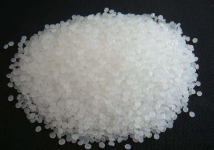read: 810 time:2025-06-25 12:14:42 from:化易天下
Phenols are a class of organic compounds characterized by a hydroxyl group (-OH) directly bonded to an aromatic ring. A common question that arises in chemistry is why phenols are acidic. This question is significant because the acidity of phenols has important implications in both organic synthesis and industrial applications. In this article, we will explore the factors that contribute to the acidic nature of phenols, focusing on the role of resonance stabilization, inductive effects, and the overall structure of the phenol molecule.
The hydroxyl group (-OH) attached to the aromatic ring in phenols plays a crucial role in determining their acidity. When a phenol molecule donates a proton (H+), it forms a phenoxide ion (C6H5O-). The ease with which this proton is lost is a key factor in explaining why phenols are acidic. Unlike alcohols, where the hydroxyl group is attached to a saturated carbon atom, the hydroxyl group in phenols is bonded to an aromatic ring. This aromatic environment greatly influences the stability of the resulting phenoxide ion, making the proton donation more favorable.
One of the primary reasons why phenols are acidic is the resonance stabilization of the phenoxide ion. When phenol loses a proton, the negative charge on the oxygen atom can be delocalized across the aromatic ring through resonance. This delocalization distributes the negative charge over several atoms, significantly stabilizing the phenoxide ion compared to an alkoxide ion (RO-) in alcohols, where no such resonance stabilization is possible. The more stable the anion, the more acidic the compound, which explains the relatively higher acidity of phenols.
Another factor contributing to the acidity of phenols is the inductive effect. The presence of electron-withdrawing groups (EWGs) on the aromatic ring, such as nitro (-NO2) or halogens, can further increase the acidity of phenols. These groups pull electron density away from the ring and the hydroxyl group, stabilizing the negative charge on the oxygen atom after deprotonation. The inductive effect thus enhances the overall acidity of phenols. Conversely, electron-donating groups (EDGs) reduce acidity by destabilizing the phenoxide ion, highlighting the delicate balance of electronic effects in determining why phenols are acidic.
To better understand why phenols are acidic, it is helpful to compare their acidity with other organic acids. For instance, carboxylic acids (R-COOH) are generally more acidic than phenols because the carboxylate ion (R-COO-) is even more stabilized by resonance than the phenoxide ion. However, phenols are more acidic than alcohols because the absence of resonance stabilization in alcohols results in a much less stable alkoxide ion. This comparison underscores the importance of resonance and inductive effects in determining the acidity of organic compounds.
In summary, the acidity of phenols is primarily due to the resonance stabilization of the phenoxide ion and the inductive effects of electron-withdrawing groups on the aromatic ring. These factors combine to make phenols significantly more acidic than alcohols, though less acidic than carboxylic acids. Understanding why phenols are acidic is crucial for their effective use in chemical reactions and industrial processes, where acidity plays a key role in determining reactivity and selectivity. By appreciating the underlying chemistry, one can better harness the unique properties of phenols in various applications.

Jincheng Petrochemical's 300000 ton polypropylene plant successfully trial production, 2024 polypropylene market analysis

The ABS market remains sluggish, what is the future direction?

Market differentiation of bisphenol A intensifies: prices rise in East China, while prices generally decline in other regions

The production method and process flow of silicone acrylic lotion, and what are the common raw materials